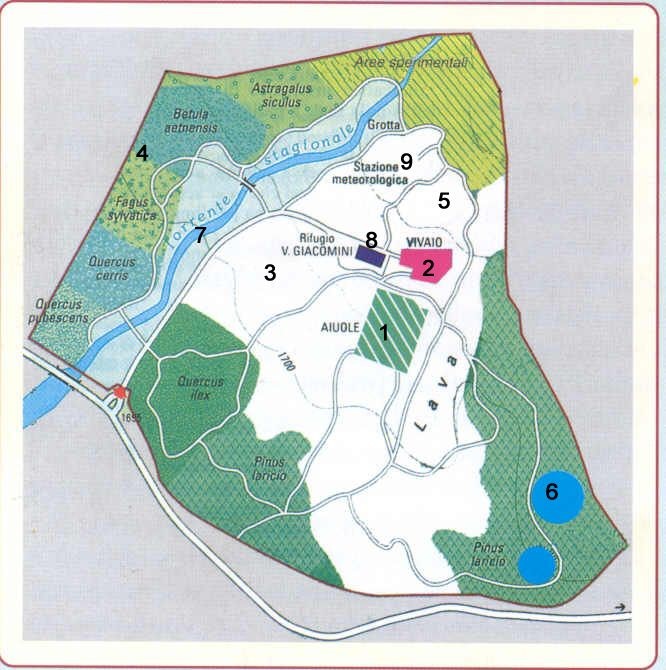Botanical Gardens New Gussonea


The garden was established in 1979 through an agreement between the General Directorate of Forests of the Sicilian Region and the University of Catania. It named after the famous scholar of Sicilian flora, John Gussone, both to give continuity to a similar initiative that dates back to the beginning of the century due to Fridiano Cavara, who founded (1903) on the southern side of the botanical garden "Gussonea" whose business was short-lived.
It differs from other botanical gardens (alpine gardens and mountains, botanical gardens), because of its location on an active volcano, in the middle of the Mediterranean region, but also for the structure and function that it was intended to give.
The target area covers over 10 hectares on the southern slopes of the volcano, between 1700 and 1750 m. It falls within the regional domain "John Saletti" and is located in an area where the forest vegetation represented by formations Pine larch, is pervaded by greenery on the floor of the high mountains (Astragaletum Sicilians).
To get to the garden you have to take an ice road to the land leading to the Rifugio Valerio Giacomini, logistics base for the staff; From this point they develop a series of trails that connect to the various sectors, among which we can point to those that are of particular interest:
- areas for the establishment of forest plant communities, characterized respectively by beech, birch Etna, oak, pine, larch, oak, holm oak;
- areas for major aspects of degradation of these plant communities;
- a surface lava for the study of the processes of the plant colonization, also for application purposes;
- a cavity in the lava rock to study the adaptations of plants to decrease the light intensity;
- a nursery for planting, cultivation and acclimatization of plants to stay put in the open;
- a weather station for recording climate data.
The garden has a significant role in environmental education both in structure and in function to it that we wanted to give: inside you can admire and learn about species and plant communities therefore among the most significant environmental Etna In his diversify in accordance with changes in climate and the lava substrate, Each visitor will be able to experience to understand melgar the plant world and its role in the wider environment of Etna.




